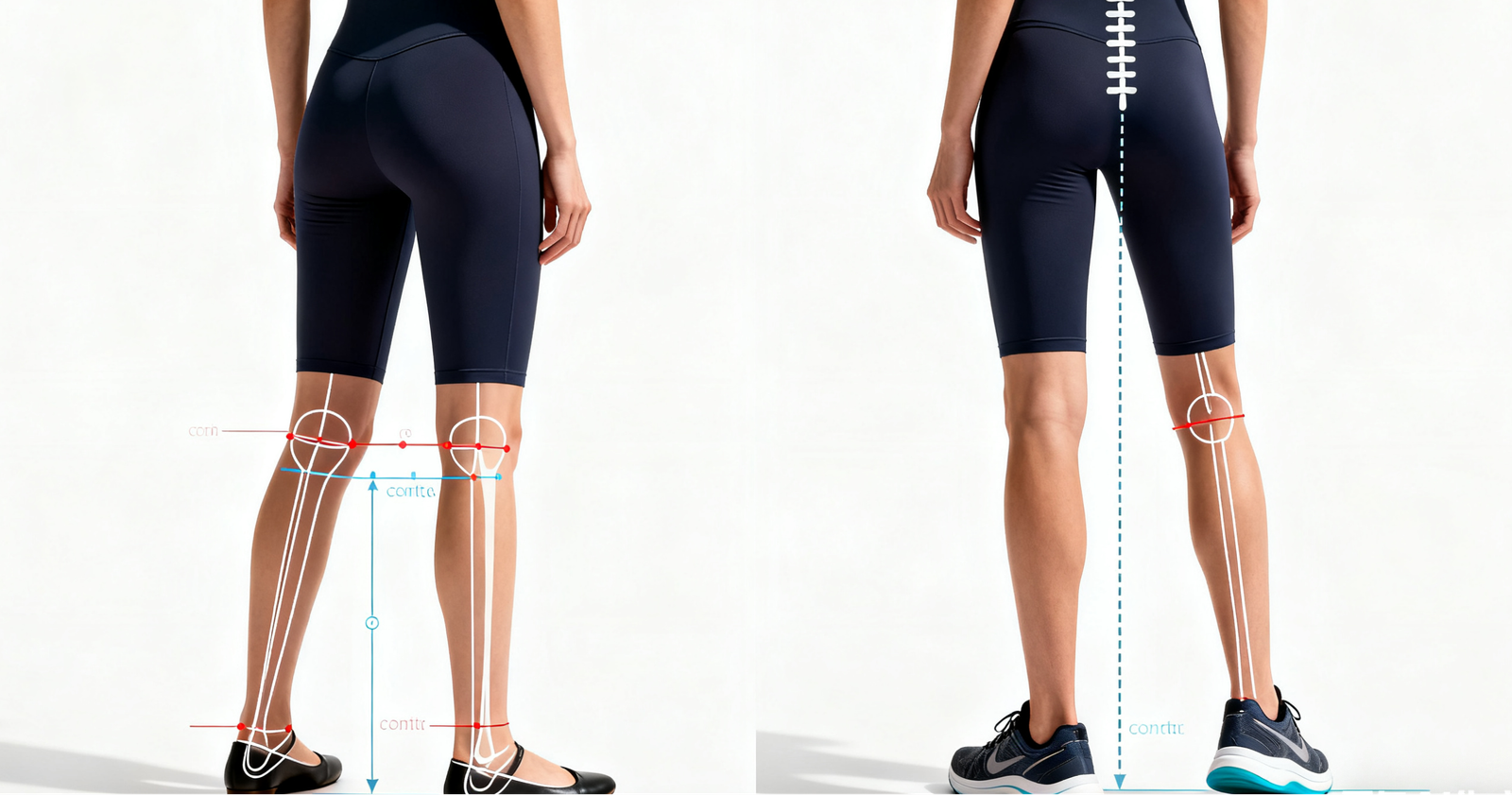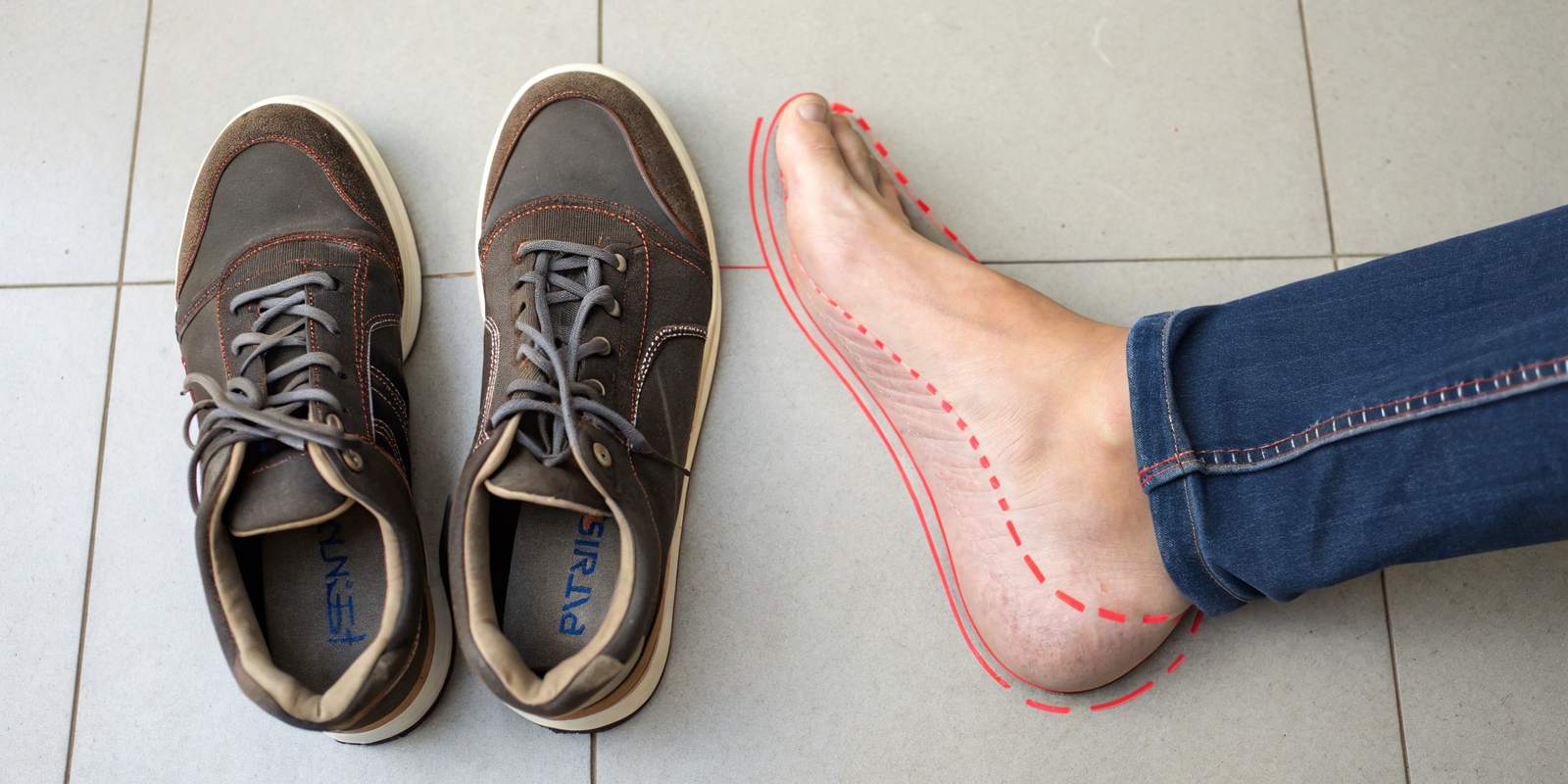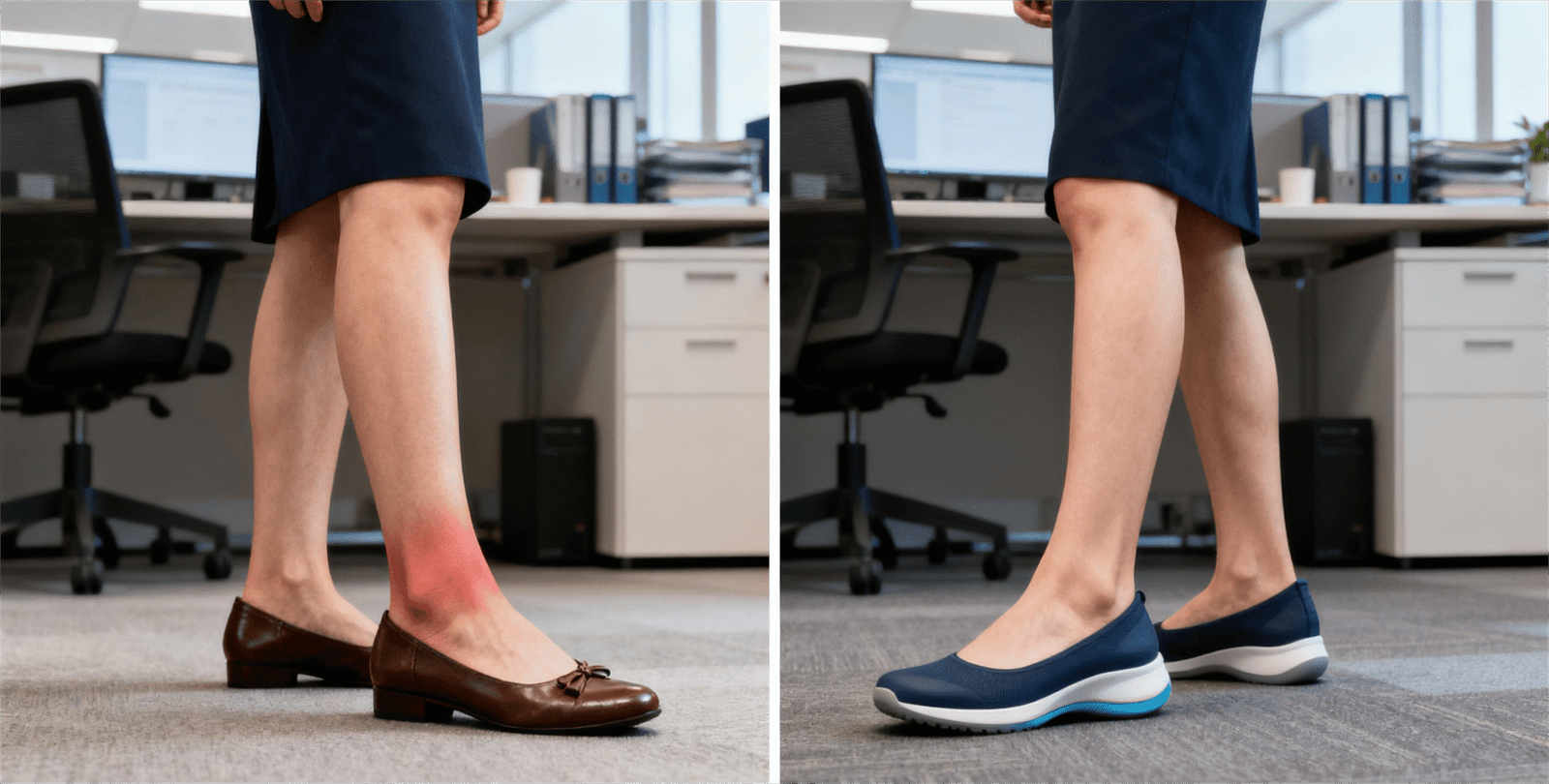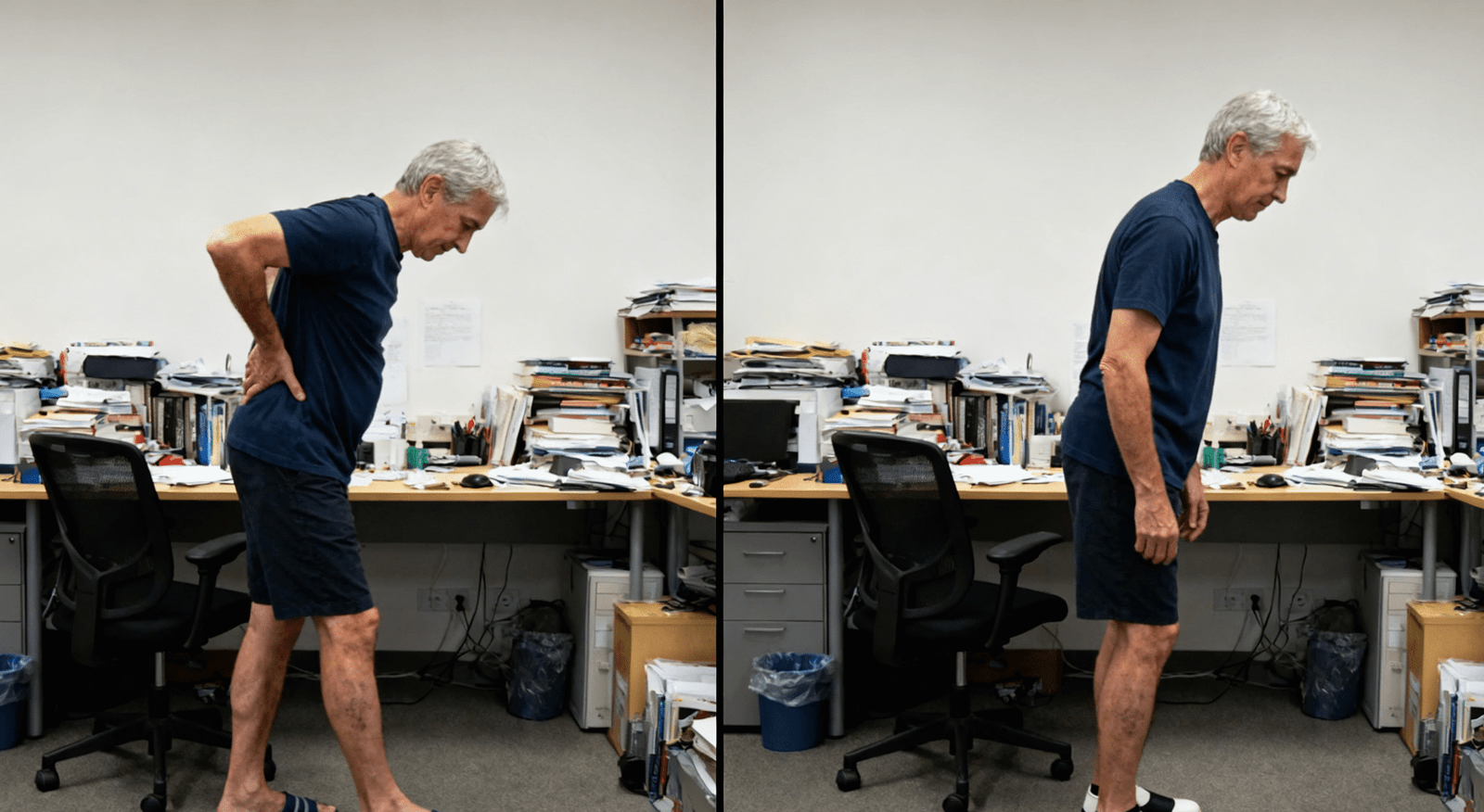Do you ever wonder if your shoes are helping or hurting you? Your footwear plays a big role in how you stand and feel every day.
Shoes significantly impact posture and overall health. The right footwear supports natural foot mechanics and spinal alignment, while improper shoes can lead to various musculoskeletal issues and discomfort.
 As someone who has spent over two decades designing and manufacturing shoes, I have always been fascinated by the connection between footwear and well-being. It is not just about fashion. It is about function, comfort, and how shoes affect our bodies from the ground up. I have seen countless designs, and the best ones always consider how our feet interact with the ground and our posture.
As someone who has spent over two decades designing and manufacturing shoes, I have always been fascinated by the connection between footwear and well-being. It is not just about fashion. It is about function, comfort, and how shoes affect our bodies from the ground up. I have seen countless designs, and the best ones always consider how our feet interact with the ground and our posture.
How do shoes impact posture and spine health?
Are your everyday shoes sabotaging your posture? The design of your footwear can directly affect your spinal alignment and overall body mechanics.
Shoes directly impact posture by altering the natural position of your feet, which in turn affects your ankle, knee, hip, and spinal alignment. Poorly designed shoes can lead to imbalances, strain, and chronic pain throughout the musculoskeletal system.
 When I think about shoe design, I always consider the foot as the foundation of the body. If the foundation is unstable, everything above it will be affected. Imagine building a house on a shaky base. It will not stand straight. Our bodies are similar. The wrong shoes can cause a ripple effect of problems.
When I think about shoe design, I always consider the foot as the foundation of the body. If the foundation is unstable, everything above it will be affected. Imagine building a house on a shaky base. It will not stand straight. Our bodies are similar. The wrong shoes can cause a ripple effect of problems.
The impact of shoes on posture and spine health is complex, involving several biomechanical principles:
- Heel Height: High heels might look stylish, but they significantly alter your body's center of gravity. They push your weight forward onto the balls of your feet. To compensate, your pelvis tilts forward, and your spine has to over-arch in the lower back (lordosis). This increased curve puts extra pressure on your spinal discs and can lead to lower back pain. Even a small increase in heel height changes the natural spinal curve. Flats that are too flat, without any arch support, can also be problematic. They do not offer enough cushioning or support for the foot's natural arch. This can lead to fallen arches over time, which again misaligns the ankles, knees, and hips, eventually impacting the spine. I have learned to design heels that aim for a balance, minimizing stress while maintaining a fashionable appeal.
- Arch Support: The arch of your foot is a natural shock absorber. It distributes weight evenly. If your shoes lack proper arch support, your arch can collapse, a condition known as pronation. When your foot pronates excessively, your ankle rolls inward. This causes your shin bone to rotate internally. This rotation travels up through your knee and hip, eventually affecting your pelvis and lower spine. This can lead to knee pain, hip pain, and lower back pain. A well-designed shoe, with adequate arch support, helps maintain the foot's natural alignment. This ensures that the shock is absorbed correctly and the body's kinetic chain remains balanced. This is a key feature we consider at Lucas.
- Cushioning and Sole Rigidity: Shoes with too much cushioning might feel soft, but they can sometimes reduce proprioception. This is your body's awareness of its position in space. This can lead to instability. Conversely, soles that are too rigid can restrict the natural movement of your foot. This prevents proper shock absorption and causes impacts to travel directly up your legs and spine. A balanced sole provides both cushioning for impact absorption and enough flexibility for natural foot movement. This helps the foot move as it should, without overworking other parts of the body.
- Toe Box Shape: A narrow or pointed toe box can squeeze your toes together. This changes how your foot connects with the ground. This can lead to bunions, hammertoes, and neuromas. When your toes are constricted, your foot cannot splay naturally. This affects your balance and how you push off the ground when you walk. This unnatural gait can then lead to compensatory movements higher up, impacting knee, hip, and spinal alignment over time. Our designs aim for a comfortable toe box which allows for natural toe movement.
 Are orthopedic shoes effective for everyday wear?
Do you think orthopedic shoes are only for medical conditions? These specialized shoes can offer great benefits for anyone seeking better foot health.
Orthopedic shoes can be highly effective for everyday wear, not just for specific medical conditions. They are designed to provide superior support, cushioning, and stability, which can correct gait imbalances, relieve pain, and proactively prevent musculoskeletal issues.
Are orthopedic shoes effective for everyday wear?
Do you think orthopedic shoes are only for medical conditions? These specialized shoes can offer great benefits for anyone seeking better foot health.
Orthopedic shoes can be highly effective for everyday wear, not just for specific medical conditions. They are designed to provide superior support, cushioning, and stability, which can correct gait imbalances, relieve pain, and proactively prevent musculoskeletal issues.
When I started in this business, "orthopedic" often sounded like a medical necessity, maybe not very fashion-forward. But the reality has changed a lot. Modern orthopedic shoes combine advanced biomechanical design with aesthetics. They are now an excellent choice for general well-being, not just for specific ailments. We work to integrate these principles into our broader lines.
Orthopedic shoes are designed with specific features that address common foot and posture problems:
- Enhanced Arch Support: A primary feature of orthopedic shoes is their superior arch support. This helps maintain the natural alignment of the foot and ankle, preventing overpronation or supination. By stabilizing the foot, these shoes ensure that the entire lower limb chain—from ankle to knee to hip—remains in proper alignment. This directly supports a healthier spinal posture and reduces strain on the back. It is crucial for distributing weight evenly across the foot. I have learned that a good arch support is fundamental for overall comfort.
- Cushioning and Shock Absorption: Orthopedic shoes typically feature advanced cushioning systems. These are designed to absorb impact more effectively than standard footwear. This cushioning reduces the stress on joints in the feet, ankles, knees, hips, and spine during walking or standing. This is particularly beneficial for people who spend long hours on their feet. It minimizes the jarring effect that can lead to chronic pain over time. My team focuses on materials that offer both plush comfort and robust support.
- Stable Heel Counter and Wide Toe Box: A firm heel counter holds the heel securely in place, preventing excessive movement and providing stability. This stability is vital for maintaining balance and proper gait. A wide toe box allows the toes to splay naturally, preventing compression and conditions like bunions or hammertoes. This freedom of movement for the toes contributes to better balance and a more natural footstrike, which positively influences gait and, by extension, posture. Ensuring enough space in the toe box without compromising the shoe's overall fit is something we carefully engineer.
- Customizable Features: Many orthopedic shoes offer removable insoles, allowing users to insert custom orthotics. This personalization ensures that the shoe perfectly matches the wearer's unique foot structure and support needs. This adaptability makes them highly effective for a wide range of foot types and conditions. It can address specific pressure points or alignment issues that off-the-shelf shoes might miss. This flexibility is a huge advantage for everyday wear, as feet's needs can change.
- Support for Specific Conditions: While great for general wear, orthopedic shoes are particularly effective for managing conditions like plantar fasciitis, flat feet, bunions, and diabetic foot issues. Their design minimizes pain and helps prevent further complications. Wearing them even when pain is not present can prevent these problems from developing. This proactive approach to foot health is why I advocate for their broader use.
Can choosing the right footwear improve overall wellness?
Could switching your shoes actually make you feel better every day? The link between proper footwear and overall wellness is stronger than you might think.
Choosing the right footwear significantly improves overall wellness by supporting natural body mechanics, reducing pain, enhancing comfort, and promoting better posture. This can alleviate fatigue, improve mobility, and contribute to a more active and healthier lifestyle.
 For me, quality footwear is not a luxury; it is an investment in health. I have heard stories from customers who found relief from chronic pain just by changing their shoes. This makes me proud of what we do at Lucas. When shoes are well-made and correctly fitted, they can truly transform how someone feels.
For me, quality footwear is not a luxury; it is an investment in health. I have heard stories from customers who found relief from chronic pain just by changing their shoes. This makes me proud of what we do at Lucas. When shoes are well-made and correctly fitted, they can truly transform how someone feels.
The right footwear can profoundly impact overall wellness in several ways:
- Pain Reduction and Prevention: One of the most immediate benefits of proper footwear is the reduction of foot, ankle, knee, hip, and back pain. Shoes with adequate support and cushioning absorb shock and distribute pressure evenly. This prevents the strain that leads to discomfort and chronic pain. By preventing pain, it allows individuals to stay active and productive. I have learned over the years that discomfort begins at the ground floor; fixing that solves many problems further up.
- Improved Posture and Alignment: As discussed, good shoes support the natural alignment of your feet and spine. This improved posture means less strain on muscles and joints throughout your body. Better alignment reduces fatigue and increases efficiency in movement. This makes everyday activities easier and more comfortable. A well-aligned body functions better overall. Our development process always comes back to this core principle.
- Enhanced Mobility and Activity Levels: When your feet are comfortable and well-supported, you are more likely to stay active. Pain-free movement encourages walking, running, and participating in other physical activities. This leads to a more active lifestyle, which has numerous well-being benefits, including better cardiovascular health and mood. The right shoes act as an enabler for physical activity.
- Fatigue Reduction: Improper footwear forces your muscles to work harder to maintain balance and support your body. This leads to increased fatigue, especially after long periods of standing or walking. Shoes that provide proper support reduce this muscular effort, allowing you to stay energized for longer. This directly impacts daily productivity and overall energy levels. A comfortable shoe means less energy wasted on compensating.
- Prevention of Foot and Lower Limb Conditions: High-quality, well-fitting shoes can prevent a host of foot problems. This includes bunions, corns, calluses, plantar fasciitis, and shin splints. By preventing these conditions, good footwear maintains long-term foot health and avoids medical interventions. Early prevention through proper shoe choice is key to lifelong foot health.
Choosing the right footwear is a simple yet powerful step towards improving your overall physical comfort, reducing pain, and supporting a healthier, more active life.
The right footwear is a foundational element for good posture and overall health. Investing in shoes that offer proper support, cushioning, and fit can prevent pain, improve alignment, and significantly enhance your daily wellness.
